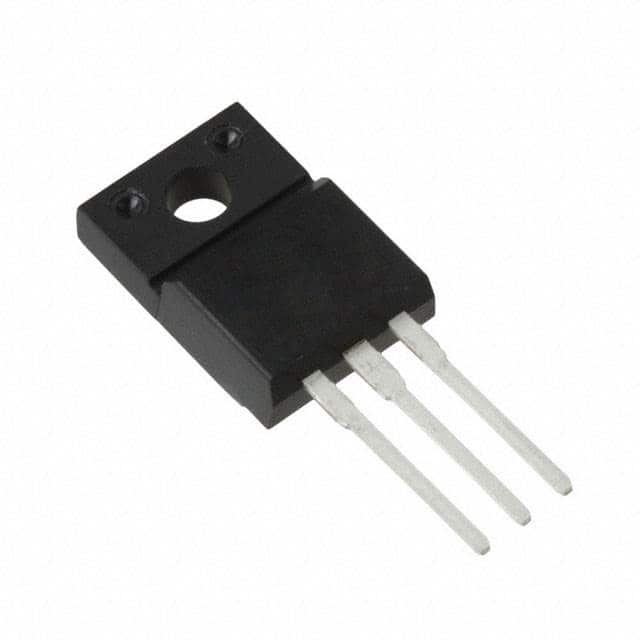Viz Specifikace pro podrobnosti o produktu.

2SA1931, NIKKIQ(J) - Product Overview and Specifications
Introduction
The 2SA1931, NIKKIQ(J) is a semiconductor product belonging to the category of PNP transistors. This component is widely used in electronic circuits for amplification and switching applications due to its specific characteristics and performance.
Basic Information Overview
- Category: PNP Transistor
- Use: Amplification and Switching
- Characteristics: High voltage capability, low saturation voltage, high current gain
- Package: TO-220F
- Essence: Semiconductor device for electronic circuitry
- Packaging/Quantity: Typically available in reels or tubes containing multiple units
Specifications
- Collector-Base Voltage (VCBO): 160V
- Collector-Emitter Voltage (VCEO): 160V
- Emitter-Base Voltage (VEBO): 5V
- Collector Current (IC): 1A
- Power Dissipation (PD): 1.25W
- Transition Frequency (fT): 150MHz
- Operating Temperature Range: -55°C to 150°C
Detailed Pin Configuration
The 2SA1931, NIKKIQ(J) transistor has a standard pin configuration with three terminals: Collector (C), Base (B), and Emitter (E).
Functional Features
- High voltage capability allows for versatile use in various electronic circuits
- Low saturation voltage ensures efficient switching performance
- High current gain enables effective signal amplification
Advantages and Disadvantages
Advantages
- Suitable for high voltage applications
- Low power dissipation
- High transition frequency for fast switching
Disadvantages
- Limited collector current compared to some alternative models
- Relatively narrow operating temperature range
Working Principles
The 2SA1931, NIKKIQ(J) operates based on the principles of PNP transistor behavior, where the flow of current is controlled by the voltage applied to the base terminal. When used in amplification, small changes in the base voltage result in larger changes in the collector current, enabling signal amplification. In switching applications, the transistor can rapidly switch between on and off states based on the base voltage, allowing for control of larger currents and voltages in electronic circuits.
Detailed Application Field Plans
The 2SA1931, NIKKIQ(J) finds extensive use in various electronic applications, including: - Audio amplifiers - Power supply circuits - Motor control systems - Voltage regulators - Signal processing circuits
Detailed and Complete Alternative Models
For users seeking alternative options, the following PNP transistors can be considered: - 2N3906 - BC557 - S8550 - C945
In conclusion, the 2SA1931, NIKKIQ(J) PNP transistor offers high voltage capability, low saturation voltage, and high current gain, making it suitable for amplification and switching applications in diverse electronic circuits.
Word count: 410
Seznam 10 běžných otázek a odpovědí souvisejících s aplikací 2SA1931,NIKKIQ(J v technických řešeních
What is the application of 2SA1931,NIKKIQ(J in technical solutions?
- The 2SA1931,NIKKIQ(J is commonly used as a high-voltage, high-speed switching transistor in various technical solutions such as power supplies, amplifiers, and electronic control circuits.
What are the key features of 2SA1931,NIKKIQ(J that make it suitable for technical solutions?
- The 2SA1931,NIKKIQ(J offers high voltage capability, low saturation voltage, and fast switching speed, making it ideal for applications requiring efficient power handling and rapid switching.
How can 2SA1931,NIKKIQ(J be utilized in power supply designs?
- In power supply designs, 2SA1931,NIKKIQ(J can be used as a switching element in DC-DC converters, voltage regulators, and other power management circuits to efficiently control and regulate power flow.
In what way can 2SA1931,NIKKIQ(J contribute to amplifier circuits?
- 2SA1931,NIKKIQ(J can be employed in amplifier circuits to drive high-power loads, providing amplification and signal processing in audio, radio frequency, and other electronic systems.
How does 2SA1931,NIKKIQ(J enhance electronic control circuits?
- In electronic control circuits, 2SA1931,NIKKIQ(J can serve as a reliable switch or driver for controlling motors, relays, and other electromechanical components, enabling precise and responsive system control.
What are the thermal considerations when using 2SA1931,NIKKIQ(J in technical solutions?
- It's important to consider proper heat sinking and thermal management to ensure that 2SA1931,NIKKIQ(J operates within its specified temperature range, maximizing its reliability and performance.
Can 2SA1931,NIKKIQ(J be used in automotive applications?
- Yes, 2SA1931,NIKKIQ(J can be utilized in automotive electronics for functions such as motor control, lighting systems, and power management due to its high voltage handling and robustness.
Are there any specific precautions to be taken when integrating 2SA1931,NIKKIQ(J into a circuit?
- It's essential to adhere to the manufacturer's datasheet recommendations regarding voltage, current, and power dissipation limits to prevent device damage and ensure safe operation.
What are the typical operating conditions for 2SA1931,NIKKIQ(J in technical solutions?
- The typical operating conditions include a specified voltage and current range, as well as considerations for frequency, duty cycle, and environmental factors based on the application requirements.
Where can I find detailed technical information about 2SA1931,NIKKIQ(J for my specific application needs?
- Detailed technical information, including datasheets, application notes, and design guidelines, can be obtained from the manufacturer's website or authorized distributors to support your specific application requirements.

